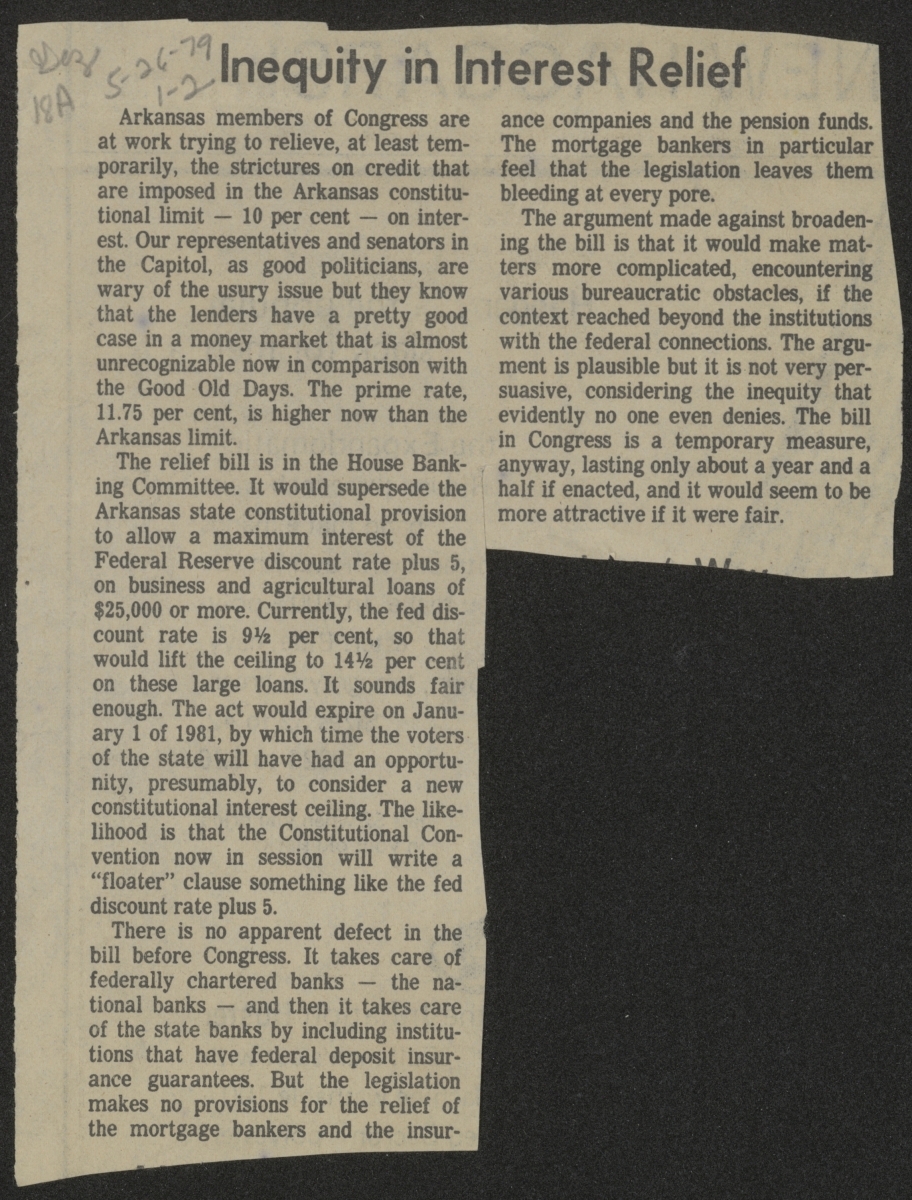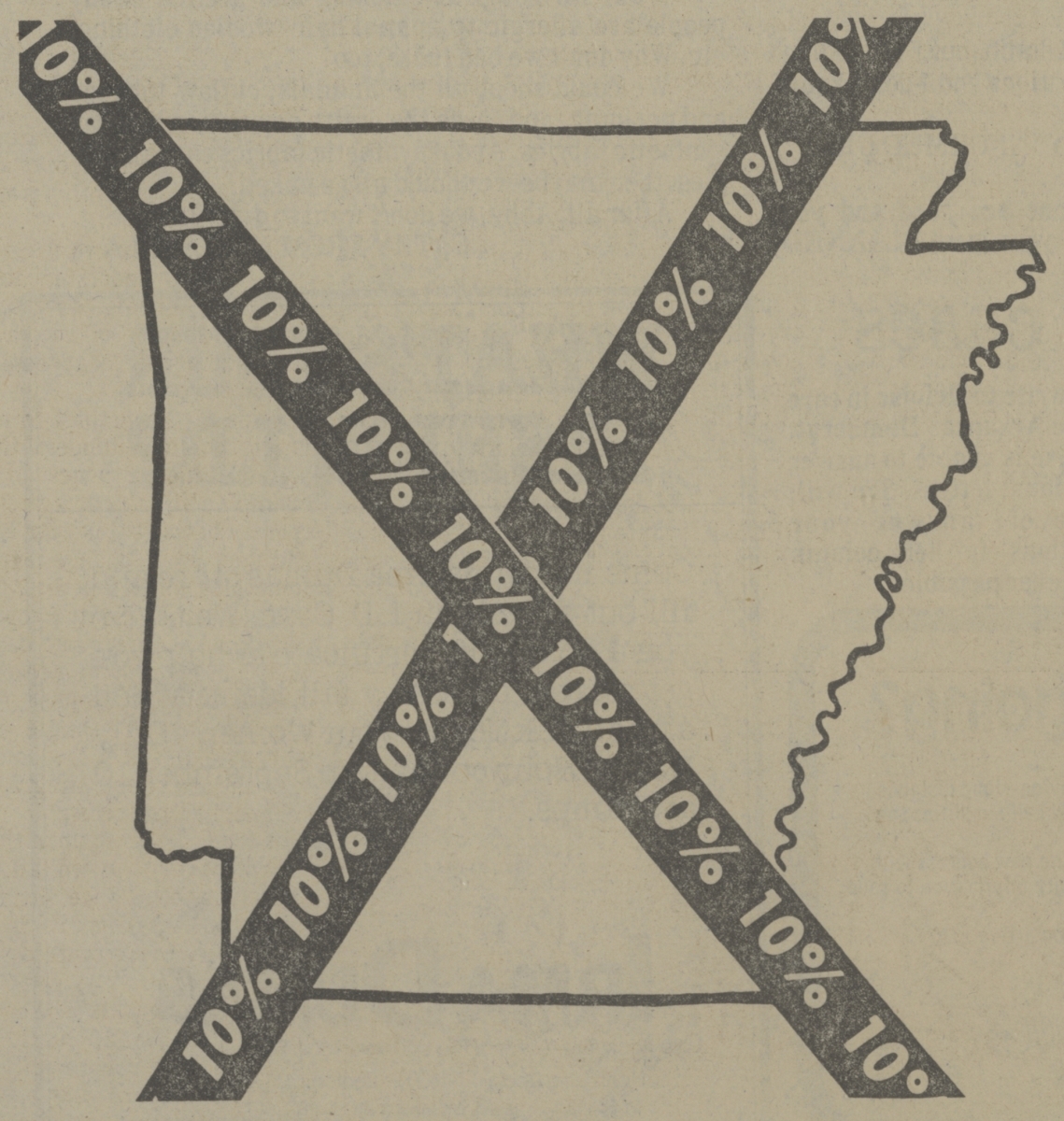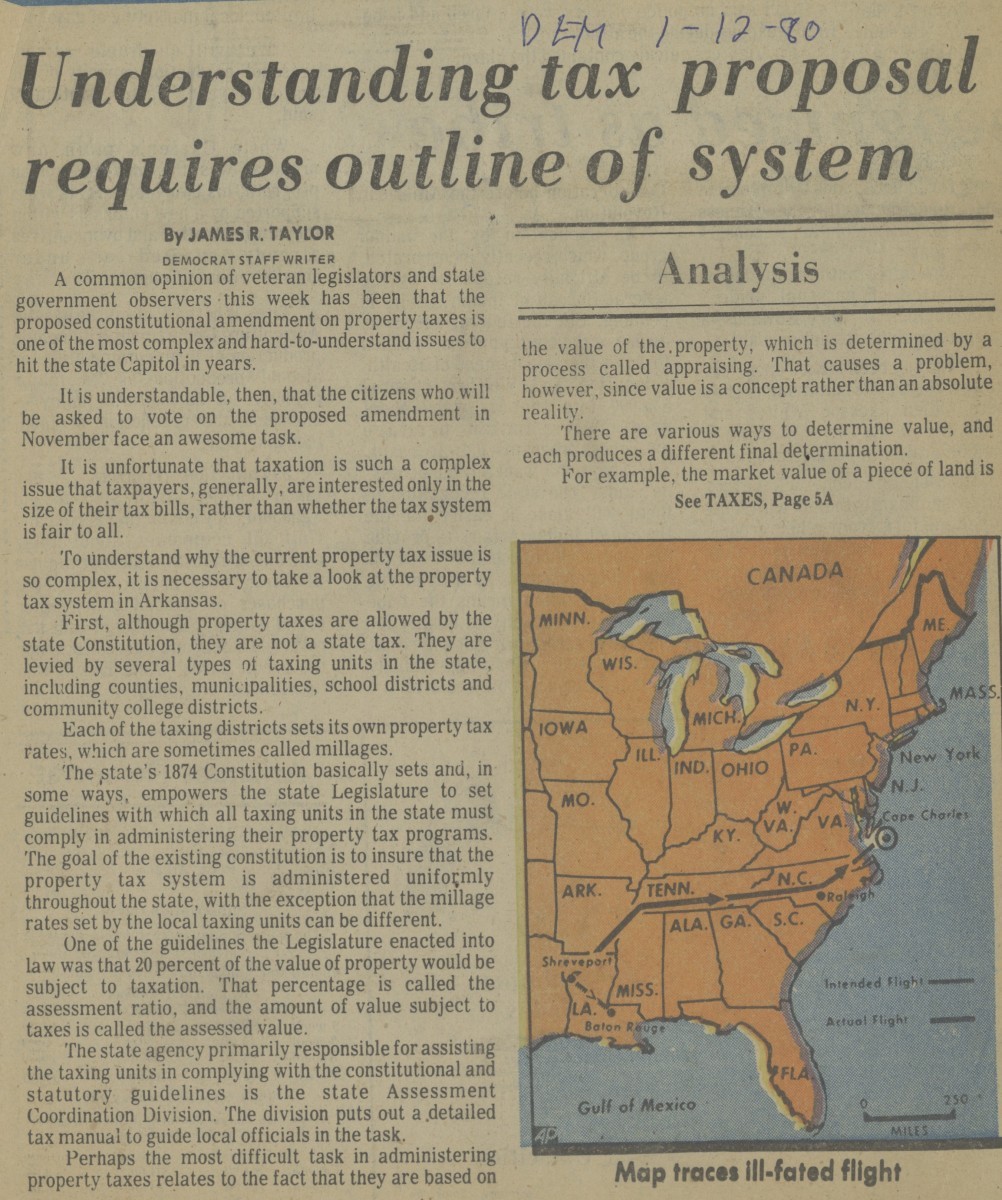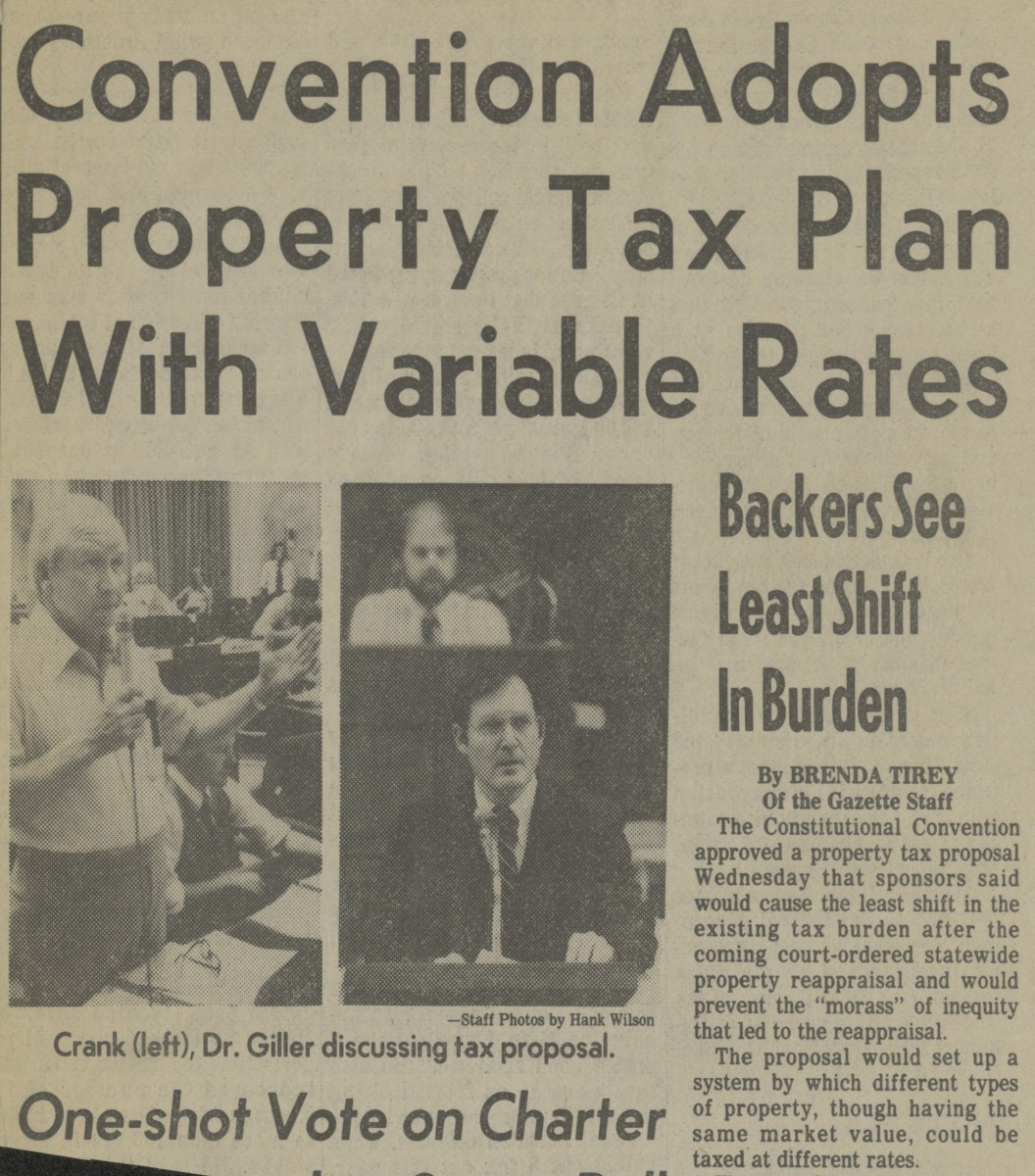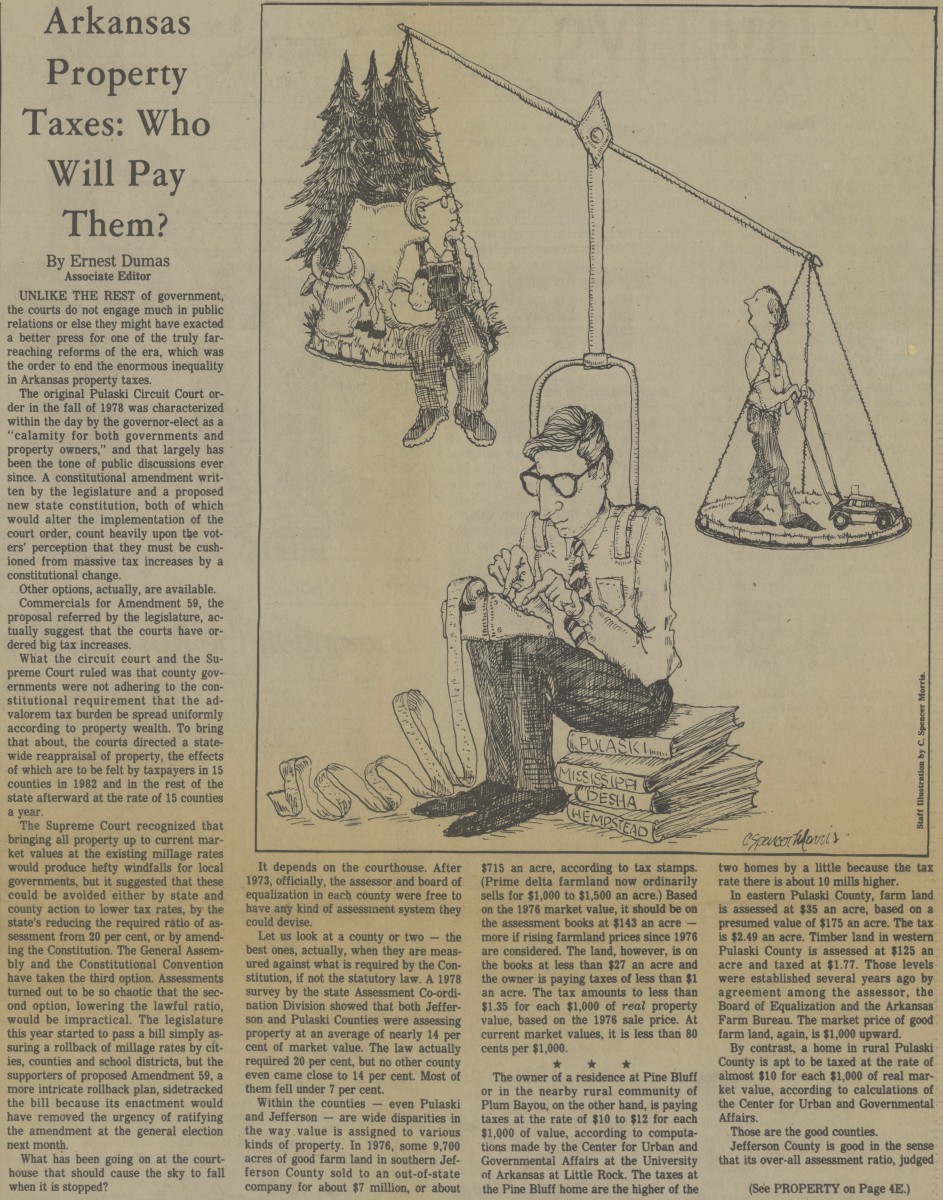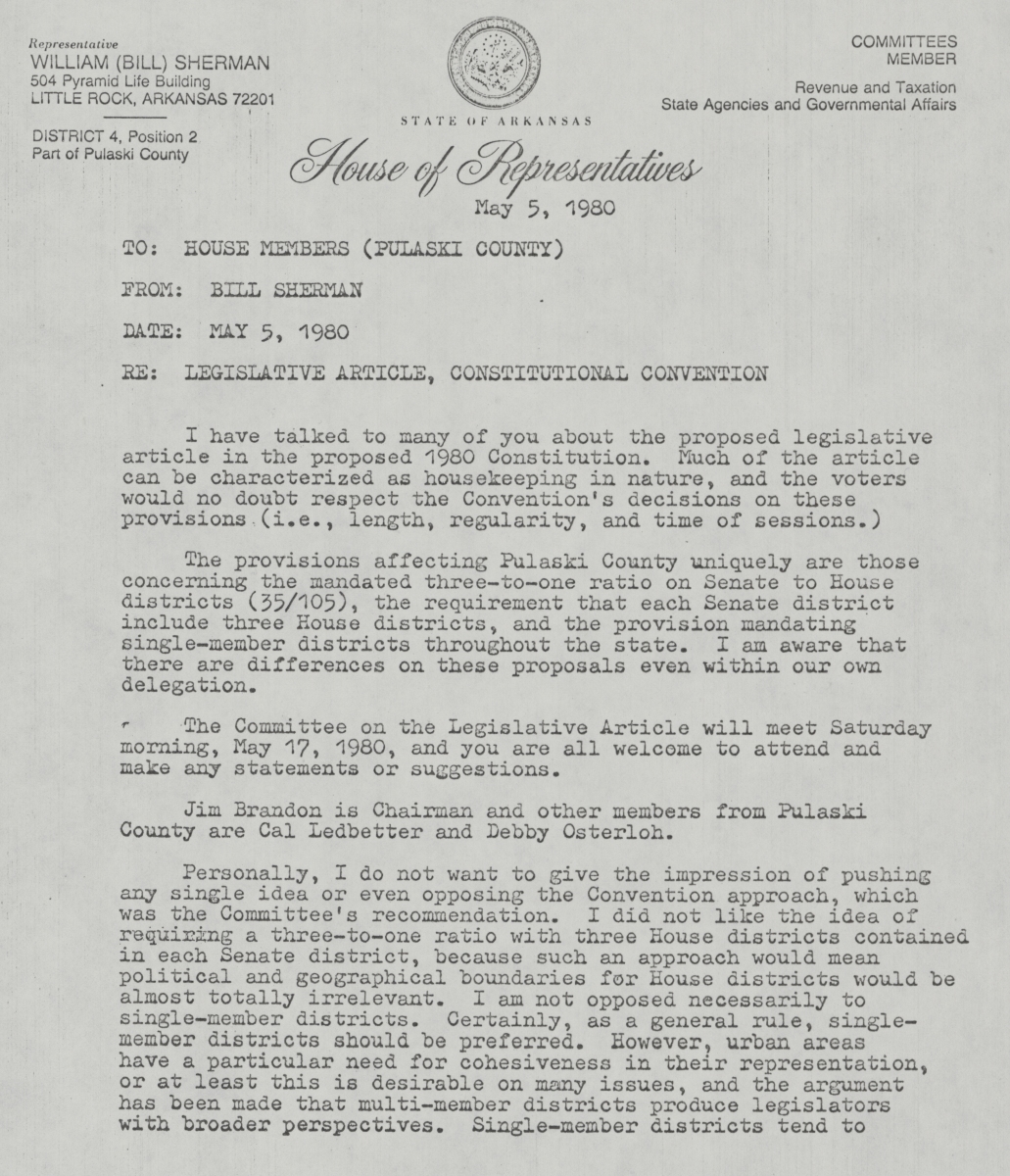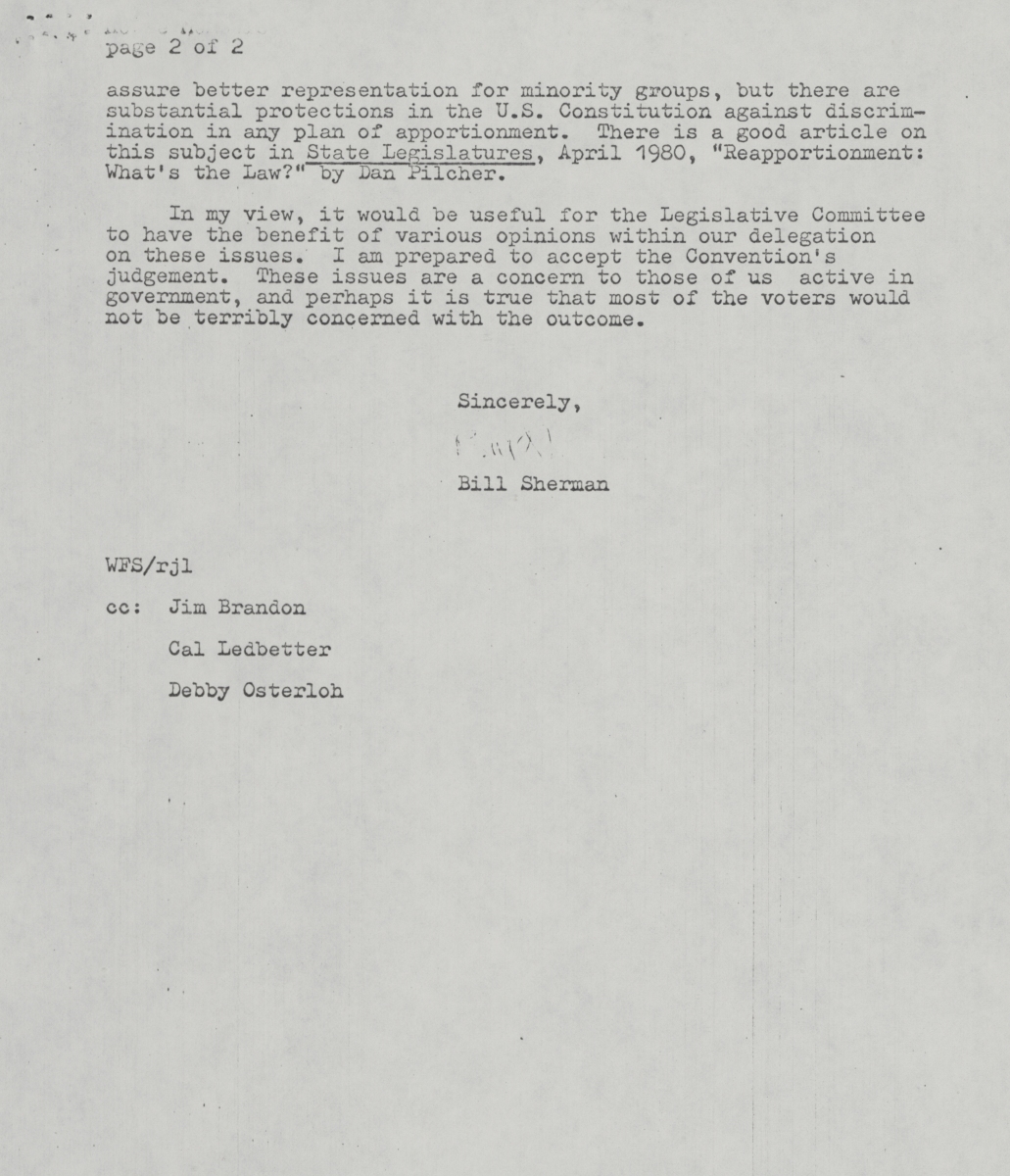Main Issues
By Ethan Fercho
By the mid-twentieth century, many Arkansas lawmakers believed that the 1874 constitution for Arkansas was out of date and not suitable to fit the needs of Arkansas in the current century, or indeed the next. In the 1970s, Chairman Robert Leflar stressed the need to prepare Arkansas for the twenty-first century. When the delegates gathered at the Constitutional Convention in 1979 and began drafting a new constitution, they started debating about what parts of the constitution to revise. The largest and most controversial issues they tackled were changes to maximum interest rates on loans, property and ad valorem taxes, and redistricting the state.
Interest
The cost of borrowing money, where the borrower pays a fee to the lender or bank for the loan. It is usually calculated as a percentage of the amount they borrowed.
Property Tax
A tax set by the local government that is based on the value of a property and paid by an individual or a business. The government uses the money from the tax to fund services such as education, highway construction, and fire stations.
Redistricting
The state is divided into political districts based on population. Legislatures and local officials are elected from each district to represent the people of that area. Redistricting is the process of redrawing the boundaries of these districts.
The delegates hotly debated the maximum interest rate, or usury limit, on bank loans because it had the potential to be a great source of revenue for the state. The old constitution had a 10% cap on interest rates. If the delegates raised the interest rate cap in the new constitution to the federal maximum of 17%, the state would make more money that could be used for improvements. However, many of them felt raising the rate was unfair for borrowers, especially farmers who would have to pay more interest on certain types of loans. Eventually, after days of debating, they compromised by keeping the cap at 10% but allowing the legislature to change it in the future. The delegates also made adjustments to the wording of the document to close loopholes and provide for exceptions.
Another major issue the delegates faced was property and ad valorem taxes. Property taxation and ad valorem (at-value) taxation is, in almost all states, the primary source of revenue for school funding; state and federal grants merely augment the budget. Many of the delegates to this Convention, particularly those from rural backgrounds, made this their primary issue because they wanted to increase funding for the schools in their area.
Ultimately, the delegates did not agree to a significant change in taxation rates. Instead, they devised a corollary solution for the school funding problem by redistributing funds from larger towns and counties to smaller ones. This compromise helped to improve rural schools and prevented the consolidation of small schools into larger ones, a major concern for those living in small towns who did not want their children to be forced to go to school in another town or county. However, this redistribution of wealth from larger schools to smaller schools was a huge source of contention, and at times forced a recess to cool tensions.
The most significant change in the proposed constitution from the 1874 constitution was redistricting the state. For the new constitution, the delegates redrew the state’s borders for legislative districts, increased the number of delegates, increased or decreased term lengths depending on the position, and restructured the county administration. According to delegate Jim Dailey, these changes made counties more autonomous from the state and allowed for more independent action without direct state control.
The delegates also debated a range of other topics at the convention such as waste management, hunting regulations, and the length of tenure and recall requirements for public officials.
For More Information:
Arkansas Constitutional Convention Records (UALR.MS.0137), UA Little Rock Center for Arkansas History and Culture, Arkansas Studies Institute, Little Rock, AR.
Dailey, D. James Jr. Interview by Ethan Fercho. April 7, 2021. UA Little Rock Center for Arkansas History and Culture, Little Rock, AR.
Ledbetter, Calvin R. Jr. “The Proposed Arkansas Constitution of 1980.” Arkansas Historical Quarterly 60 (Spring 2001): 53-74.
Thrasher, William Jr. Interview by Ethan Fercho. February 5, 2021. UA Little Rock Center for Arkansas History and Culture, Little Rock, AR.

